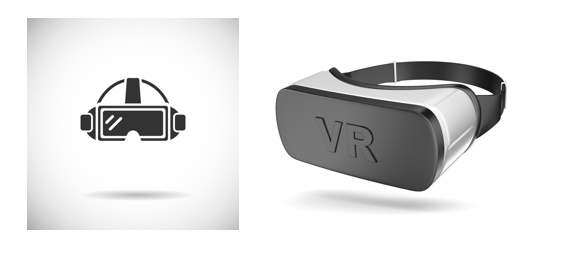SSZT808 february 2018 LP5562 , TLC59116 , TLC59401
“Virtual reality will be big.” What sounded revolutionary several years ago has become true, and the market is now maintaining strong growth. In virtual reality applications, what you might not know is that there are actually lots of light-emitting diode (LED) drivers inside. In this post, I’ll introduce the kinds of LEDs integrated in different virtual reality detection methods and the best way to drive them.

Virtual reality products include low-, mid- and high-end models, with correspondingly different LED drivers as well. Mid- and high-end products usually comprise a base station and glasses. The base station detects the movement of the glasses, so the graph shown in the glasses changes accordingly. There are three popular detection technologies in the market: infrared (IR), visual and laser. IR LED detection localization accuracy is medium and its cost is not as great as laser. Visual LED costs the least. Laser has the best localization accuracy and costs the most.
In IR LED detection, there are dozens of IR LEDs spread inside the glasses (not visible to the human eye). In order to get more accurate localization, IR LEDs usually operate with high current and a low duty cycle to avoid thermal issues. Since there may be large quantities of LEDs – as many as 30 to 40 – three to four LEDs are connected in series to reduce the control channel number. TI’s TLC59401 16-channel LED driver could be a good fit for IR LED-driven virtual reality. Each channel is able to sink 120mA of high current and the LED supply voltage can go up to 17V. Each channel is also able to control four IR LEDs in series.
In visual LED detection, the LED current is much lower (typically under 20-30mA), since high current would make the human eye feel uncomfortable. Visual LED detection also requires fewer LEDs – about a dozen. In this case, TI’s 16-channel TLC59116 LED driver with I2C interface can be a cost-effective choice.
The LEDs used for laser LED detection typically operate under very large current – several amperes. These LEDs are always driven by discrete metal-oxide semiconductor field-effect transistor (MOSFET) solutions. However, there could be a red-green-blue (RGB) indicator LED driver as well for all kinds of virtual reality glasses, from low to high end. This RGB indicator indicates the status of the glasses, such as whether they are in active, standby or shutdown mode. For RGB indicators, TI’s LP5562 is a good choice; it is a four-channel LED driver with an I2C interface that can drive one red-green-blue-white (RGBW) LED. Meanwhile, the LP5562 integrates an internal programmable static random access memory (SRAM) that makes it able to operate independently without processor control. Its ultra-small 1.648-by-1.248mm die-size ball grid array (DSBGA) package can help save system space.
With more and more virtual reality opportunities coming, TI continues to develop new products to help ease system design. Get more information about TI’s large LED driver portfolio.